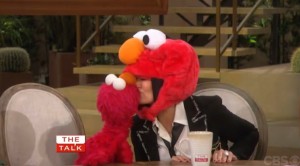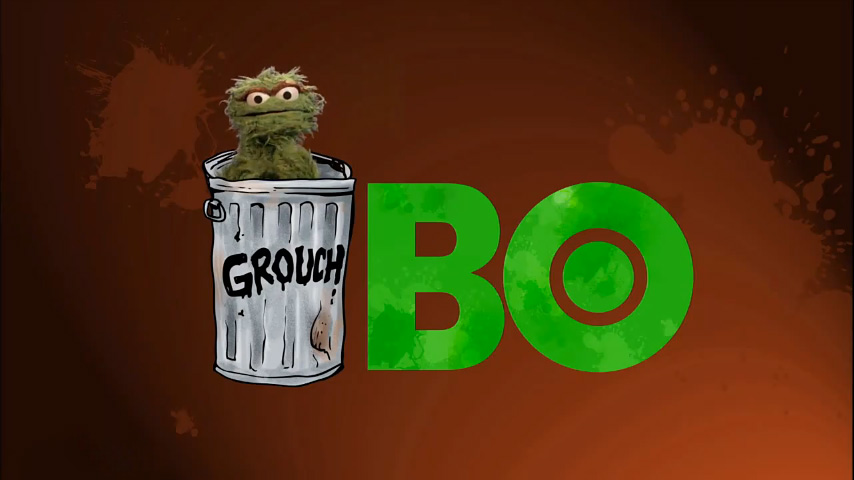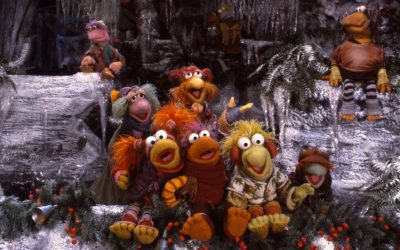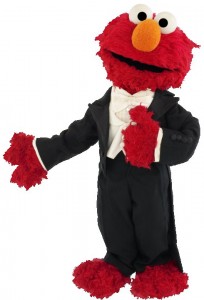
Perhaps you saw this article last week on Kotaku, an opinion piece with the click-hungry title “How Elmo Ruined Sesame Street.” The writer, Kevin Wong, feels very strongly about a certain little red monster.
I don’t know if Wong thinks he’s making a bold new statement, but anti-Elmo sentiment has been around for a long, long time. For Sesame Street fans like us, it’s as old and boring as those jokes about “haha muppets have hands up there butts lolololol.” While Elmo, as we know him, has been on the show since the mid-80s, the complaining started back during the Clinton administration.
There was a whole generation of former Sesame Street viewers who hadn’t thought about the show in years, but when the Tickle-Me-Elmo doll produced the giggle heard ‘round the world, it alerted them to the fact that — gasp! — things had changed on the show since they were preschoolers.
The main point of Wong and the other Elmo-haters seems to be that at some point, Elmo became too prominent in the Sesame Street world, and the show is poorer for it. But is that really true?
Here’s the “too long, didn’t read, because I didn’t watch Sesame Street enough to learn to read” version of my rebuttal: Elmo became a star at a time when the show found itself with an unprecedented amount of competition for the preschool audience, and if Elmo hadn’t caught on, there might not even be a Sesame Street now. Elmo wasn’t forced on an unsuspecting world — he became the face of Sesame Street because kids fell in love with him.
And now for lots more words about Elmo, here are some of Wong’s specific objections to Mae and Louie’s little boy, and my responses:
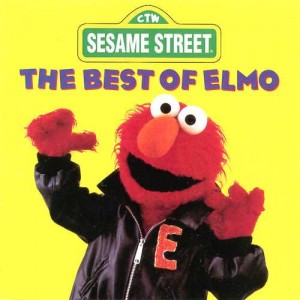
–He’s too cute. Wong says: “[T]he design of Elmo was more adorable and accessible than most Henson creations. The Muppets that preceded Elmo were huggable, but they had an edge to them—a bold facial feature or eccentricity that kept them from saccharine territory. And some of the monsters were downright scary looking.”
Okay, so some monsters are cute, and some monsters look scary and off-putting. It’s just like people! Wong uses images of Herry, Harvey Monster, and Frazzle as examples, but of those, only Herry was ever a prominent character… and aside from the brief period before his nose job, Herry has never been that scary. And later in the article, Wong expresses his fondness for Grover. Grover? Grover is absolutely a cute, adorable character! There can’t be more than one?
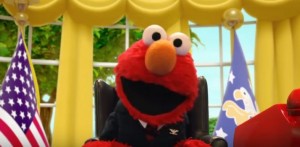
–When Kevin Clash took over Elmo, he turned him into a childish figure. Wong says: “Whereas Hunt had given the character a gruff, caveman gimmick, Clash molded the Muppet into a three-and-a-half-old who embodied love—lots of hugs and lots of kisses.”
We still haven’t seen much of Hunt’s Elmo, but from what we have seen, it’s apparent that he didn’t have much of a personality at all in those days. The guy we saw briefly in Being Elmo grunting, “Uh-oh, Elmo squeak balloon too much!” didn’t exactly come across as a great character. And anyway, Kevin didn’t create Elmo’s personality all by himself. Sesame Street, as a matter of fact, employs several writers who develop the characters.
Also: Love? Hugs? Kisses? OH NO! What a terrible thing for kids to be exposed to!
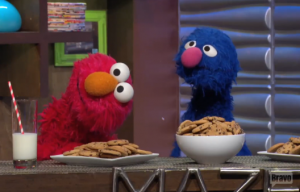
–Elmo has no reason to exist on the show. Wong says: “Other characters were more grounded and had specific, research-based reasons for being on the cast. Oscar the Grouch was created as an indirect representation of the poor and underprivileged.”
Sesame Street is the most researched television show in history. They’re constantly monitoring what works and what doesn’t. If Elmo hadn’t been effective at reaching the kids at home, he would have vanished into Muppet limbo like Leo the Party Monster and Lulu and Merry.
Also: Citation needed on the Oscar thing. I’ve never heard anyone involved with the show say anything like that, and how can Oscar be poor when he has a swimming pool and a bowling alley in his trash can?

–He took over Big Bird’s territory. Wong says: “A lot of stories used to be based around Big Bird, who was psychologically characterized as a six-year-old. And in a lot of ways, this was ideal—six years old was on the older end of Sesame Street’s age demographic, and Big Bird served as both a role model and a peer to his audience.”
This is true. But here’s something that comes up in every book and article on the history of the show: In the old days, the Sesame Street audience was a few years older, but by the mid-90s, researched revealed that little two-and-three-year-olds were watching. When the creators discovered that the average age of the eyeballs glued to the show was going down, they made adjustments, which makes a little more sense than ignoring the core audience.
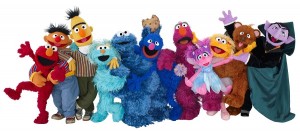
–Elmo has pushed other Muppets out of the way. Wong says: “Elmo’s omnipresence also comes at the exclusion of the remaining cast. So many characters, both human and Muppet, have been all but evicted from Sesame Street. Herry. The Two-Headed Monster. Grover. Prairie Dawn.”
This is a common complaint of the Elmo-haters. And yeah, Elmo has had a lot of screen time over the past 20 years. It would be nice to see some of the other guys get more to do. But once again, the reality is that Kids Love Elmo, and the Sesame people want kids to keep watching the show. Beyond that, there’s the fact that there was a lot more time for the Two-Headed Monster when they did 130 episodes a season compared to the recent 26-episode seasons. But Grover is still a frequent presence — he even has his own segment in “Super Grover 2.0.” But I do want to see more of Prairie Dawn. Make it happen, Sesame Workshop!
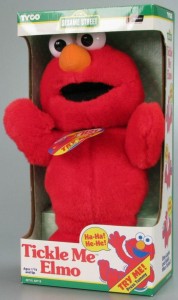
–Characters like Elmo and Abby are too cute and marketable. Wong says: “Abby Cadabby was cute, sure. But remember when Muppets didn’t have to be cute? Abby was a magical girl stock character, created with marketing near the forefront.”
That brings up an important point. Contrary to popular belief, Sesame Street does not take 100% of its budget directly out of the pockets of the average, hapless, American taxpayer. The show needs funding from various sources to stay afloat, and those dolls help keep Elmo and Abby employed.
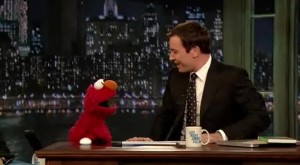
–Elmo is too visible outside the TV show. Wong says: “The show’s Elmo obsession shows little sign of stopping—he’s the ‘go to’ for talk show appearances and celebrity cameos. Marketing continues to place him from and center, often with no one accompanying him.”
Why would they not use the most popular character to promote the show? Again, it’s reality: If Harvey Kneeslapper’s face on promotional material and DVDs and and books sold like hotcakes, we’d have “Kneeslapper’s World” and “Kneeslapper the Musical.” But the children of today have spoken, and Elmo is their favorite. It’s worth noting, though, that Cookie Monster gets his share of appearances too, especially in the last five years or so.
And by the way, Elmo is genuinely hilarious on talk shows. When he’s freed from the educational restraints of the show, Elmo gets to be a little bit mischievous, even smart-alecky, a trait established in the Kevin Clash years that Ryan Dillon has continued admirably since taking over the character.
Kevin Wong goes on to say that he’s protesting the scourge of Elmo by refusing to buy Elmo toys for his young son and avoiding Elmo-centric products when he does buy Sesame Street merchandise. “It’s an arduous task,” he says, “but I do what I can.” Wow, what a hero.
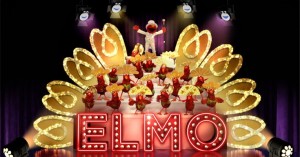
So here’s what it really comes down to. Our childhood memories are precious to us, and Sesame Street is in the childhood memories of 45 years worth of children. There seems to be a primal, instinctive negative reaction grown-ups have when they discover that the thing they remember so fondly from their preschoolhood is no longer exactly the way they remember it. It’s like, “Why does Sesame Street need an Elmo? They didn’t need an Elmo when I was watching, and I turned out great!”
That’s true. I mean, it’s probably true. I don’t know how great you turned out. But today’s Sesame Street has an Elmo, and that’s the way the kids want it. And as angry as it might make some folks, Sesame Street is designed primarily to please small children, not 35-year-olds.
But you know what? If, in season 47, they introduce a new character called Hubert the Wombat and he becomes a big hit with viewers and gets extensively merchandised, all the kids who grew up in the 90s and 2000s will complain about him. And they’ll write articles called “How Hubert the Wombat Ruined Sesame Street.”
I’m not saying everyone has to like Elmo. If he’s not your guy, that’s cool. But the kids dig him, and he’s not going anywhere anytime soon. And lest we forget, one time he danced on the moon and that was pretty cool:
Click here to ruin Sesame Street on the Tough Pigs forum!
by Ryan Roe – Ryan@ToughPigs.com
